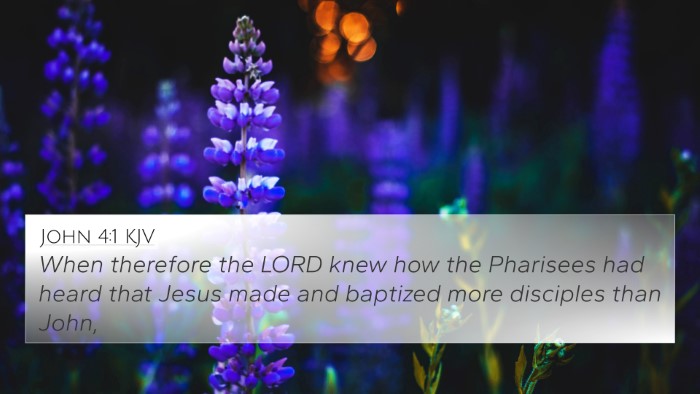Understanding John 11:54
John 11:54 states: "Therefore Jesus no longer walked openly among the Jews, but went from there into the country near the wilderness, to a town called Ephraim, and there remained with his disciples." This verse marks a pivotal moment in the ministry of Jesus, highlighting both His strategic retreat and His continued mission.
Contextual Overview
This passage comes in the wake of Jesus raising Lazarus from the dead, a miraculous act that intensified the animosity of the Jewish leaders against Him. Consequently, Jesus's withdrawal from public life serves to protect Himself and to avoid further conflict until the appointed time of His passion.
Commentary Insights
-
Matthew Henry:
Henry emphasizes the providential aspect of Jesus's actions. He notes that Jesus's retreat was both a precaution against danger and a necessary step to prepare for the impending events of His crucifixion. This illustrates the wisdom in Jesus's ministry, as He remained focused on His divine mission.
-
Albert Barnes:
Barnes highlights the contrast between Jesus's previous public ministry and this moment of seclusion. He suggests that Jesus’s movement towards Ephraim symbolizes a preparation phase, where He could engage with His disciples without external pressure, thus fostering deeper discipleship and understanding of His teachings.
-
Adam Clarke:
Clarke explains the geographical significance of Ephraim, pointing out it was a place of retreat for those who were oppressed. He notes that Jesus was not only avoiding confrontation but also providing a sanctuary for His followers, which speaks to His pastoral care.
Bible Verse Cross-References
To deepen the understanding of John 11:54, here are several related cross-references:
- Matthew 12:14-15: Illustrates the increasing hostility towards Jesus and His response of withdrawing for safety.
- Luke 5:16: Reflects Jesus's practice of retreating for prayer and communion with the Father, indicating the importance of spiritual replenishment.
- John 6:15: Shows Jesus avoiding the adulation of the crowd, which parallels His actions in John 11.
- John 10:39: Provides context for the dangers Jesus faced from the Jewish leaders and His miraculous escapes.
- John 7:1: Indicates that Jesus moved about in Galilee, avoiding Judea due to threats on His life, similar to the theme of strategic retreat found in John 11:54.
- Matthew 26:1-2: Offers insight into the timing of Jesus's passion, reinforcing the notion of His movements being directed by divine timing.
- Mark 1:35: Highlights Jesus's habit of retreating for prayer, showing the necessity of solitude in ministry.
Theological Themes
This verse illustrates key theological themes such as:
- Divine sovereignty in the unfolding plan of salvation.
- The necessity of retreat in ministry for personal renewal and prayerful preparation.
- The unfolding tension between Jesus and religious authorities, leading to His eventual crucifixion.
Scriptural Cross-Referencing Methods
Engaging with Bible verses through cross-referencing provides insight into the connections between passages:
- Identifying Connections between Old and New Testament: Find parallels such as prophetic fulfillments in the actions of Jesus.
- Comparative Studies: Analyze themes from the Synoptic Gospels about Jesus’s ministry and its implications.
- Links between the Prophets and Apostolic Teachings: Explore how the prophetic tradition informs New Testament understanding.
- Cross-referencing Psalms with New Testament Teachings: Psalmic themes of refuge and deliverance echo in Jesus’s choices.
Conclusion
John 11:54 profoundly encapsulates a critical juncture in Jesus’s ministry. By understanding the context and implications of this verse, one can appreciate the intricate connections within Scripture and the overarching narrative of salvation history. Jesus’s retreat is not merely an escape but a vital part of the divine plan, allowing for preparation, teaching, and eventual fulfillment of His mission. For those seeking deeper understanding, utilizing tools for Bible cross-referencing can enhance interpretation and reveal thematic links throughout the Bible.











